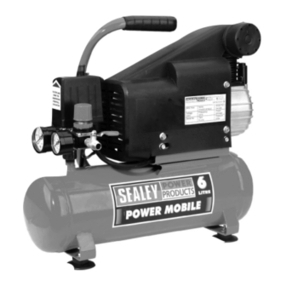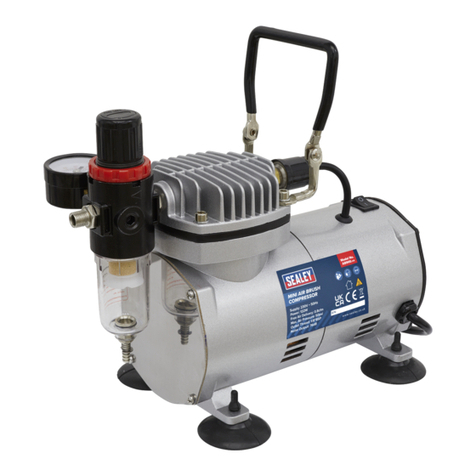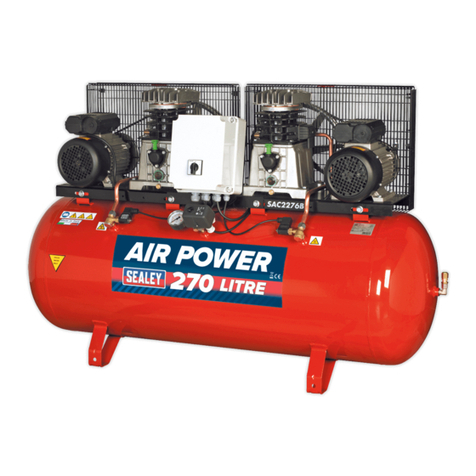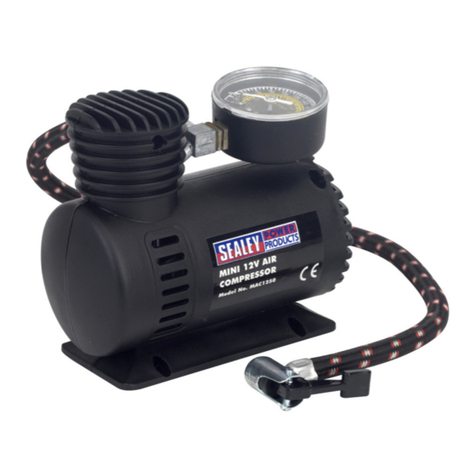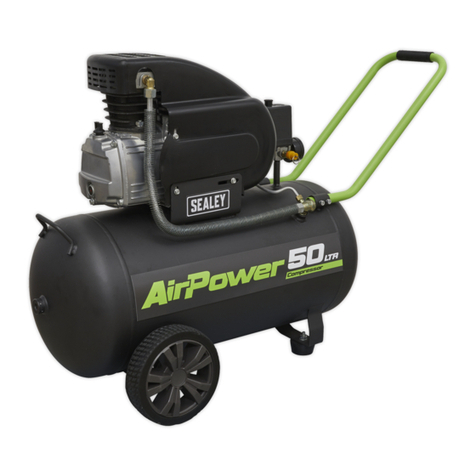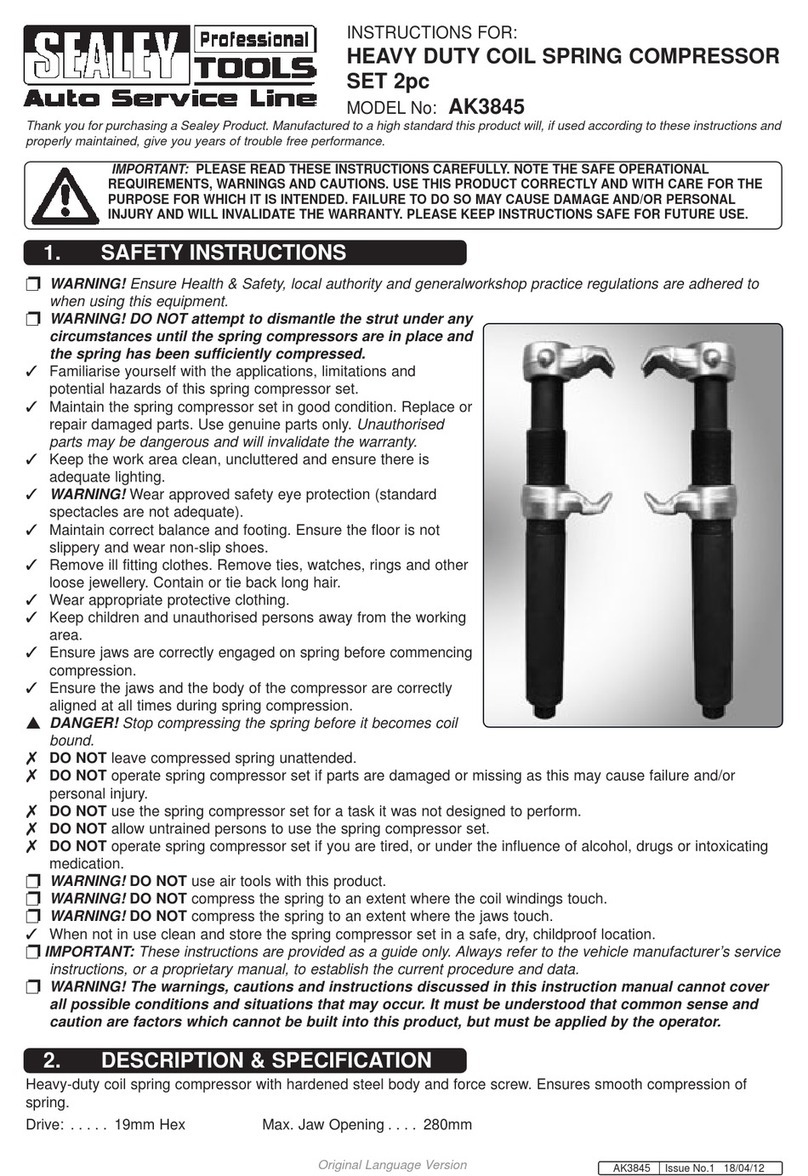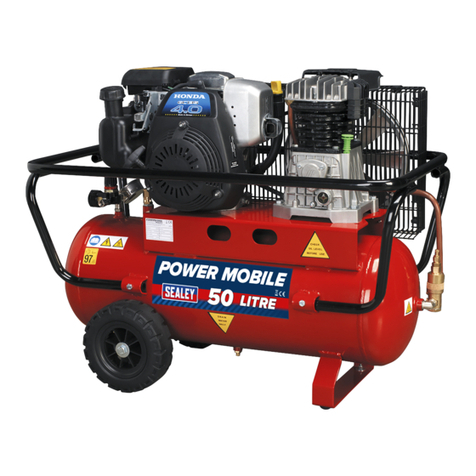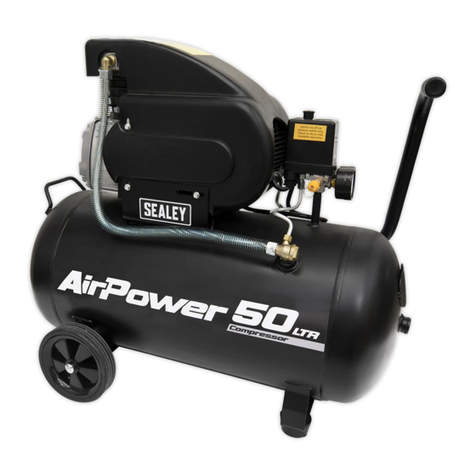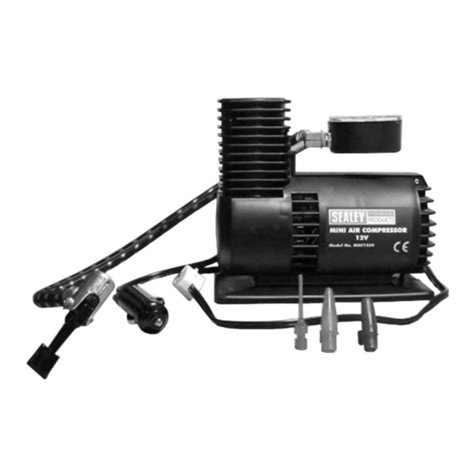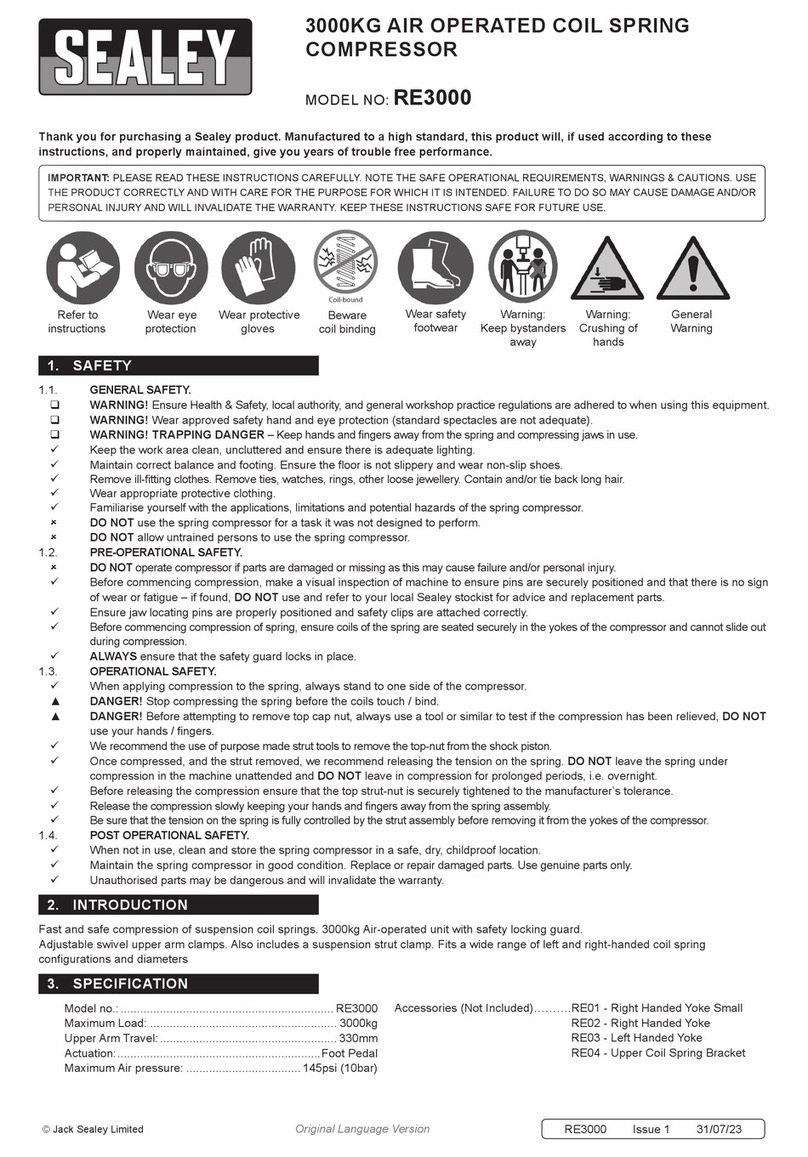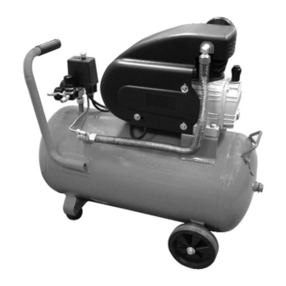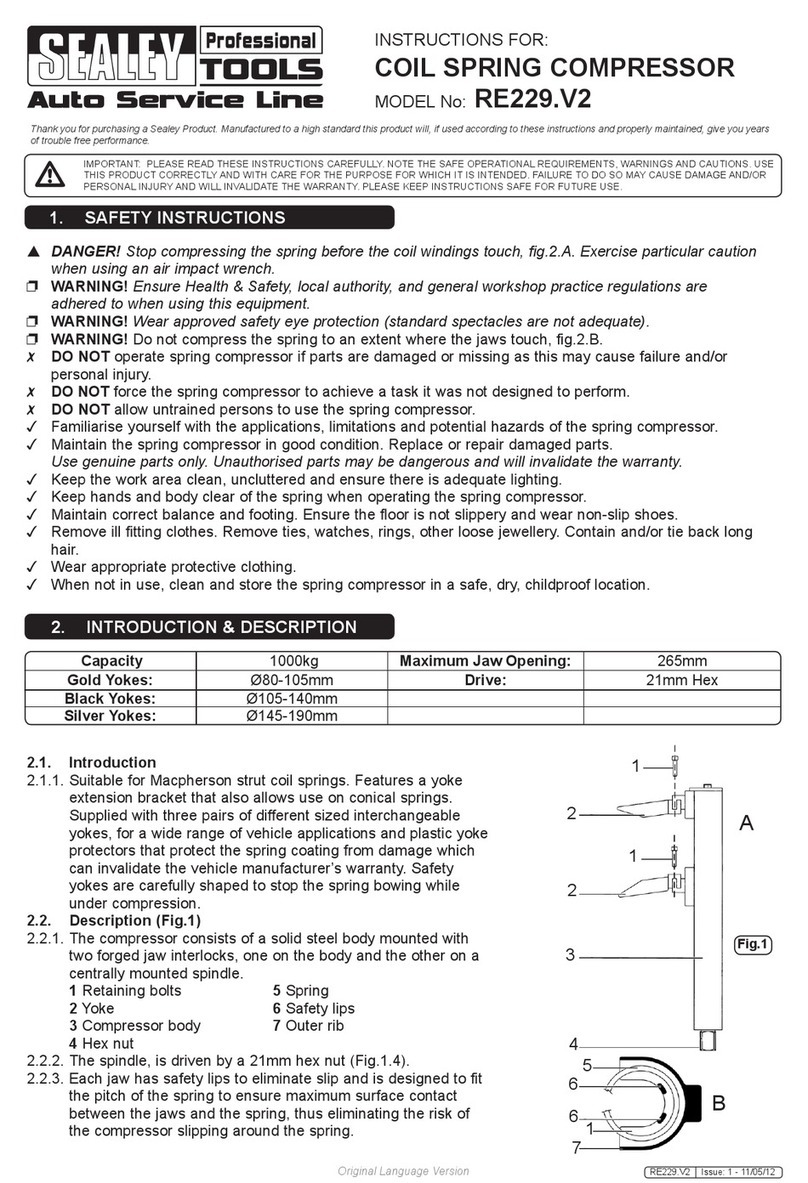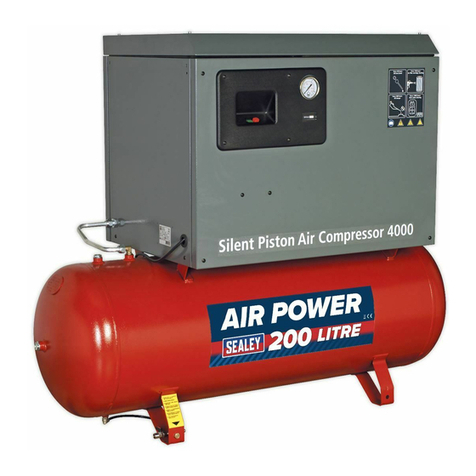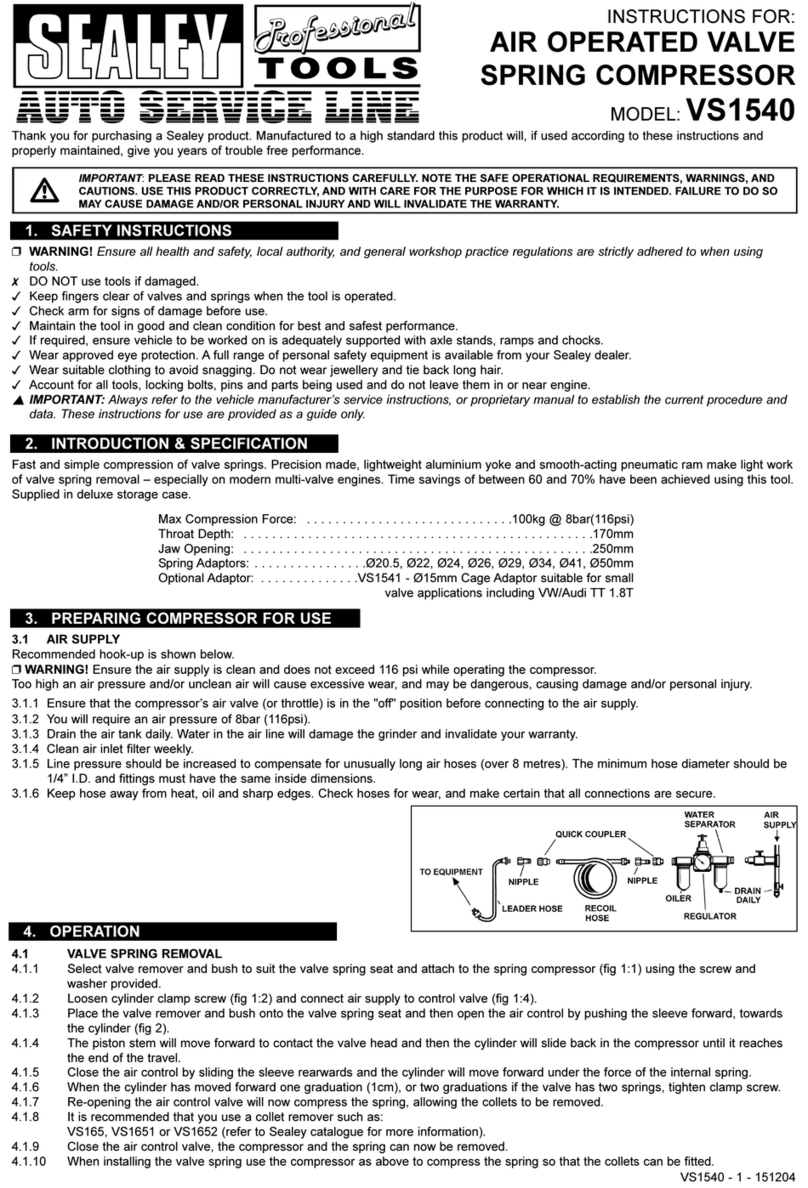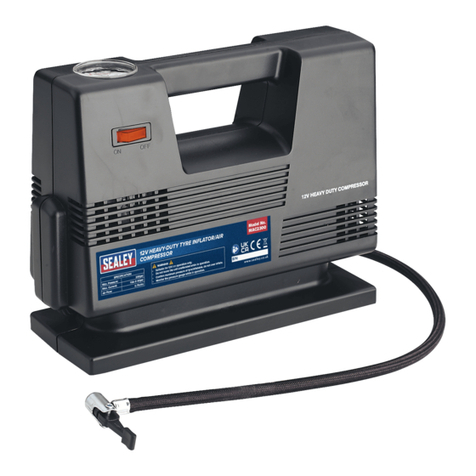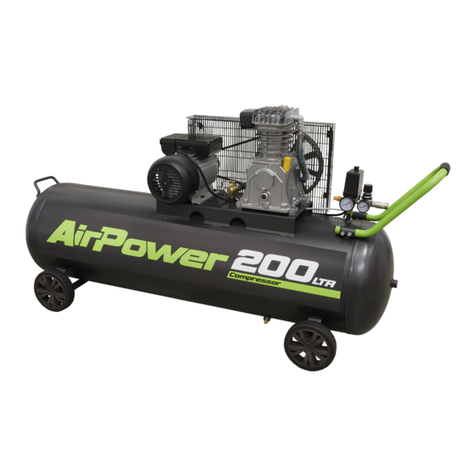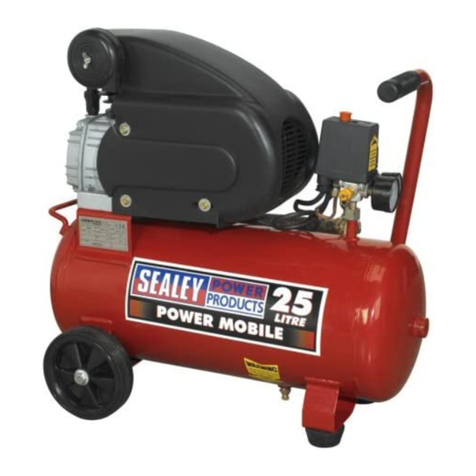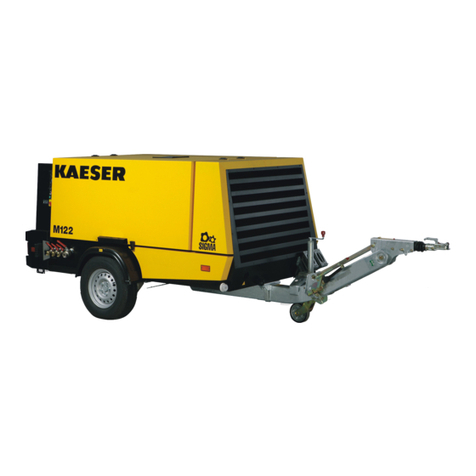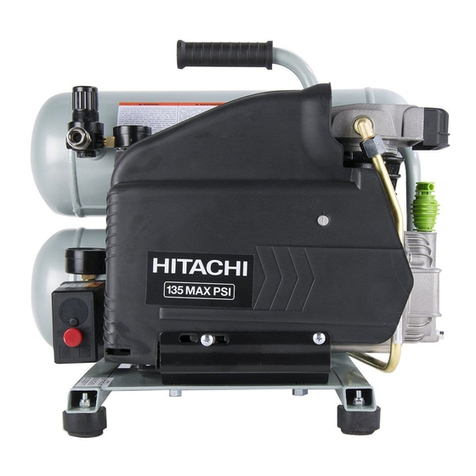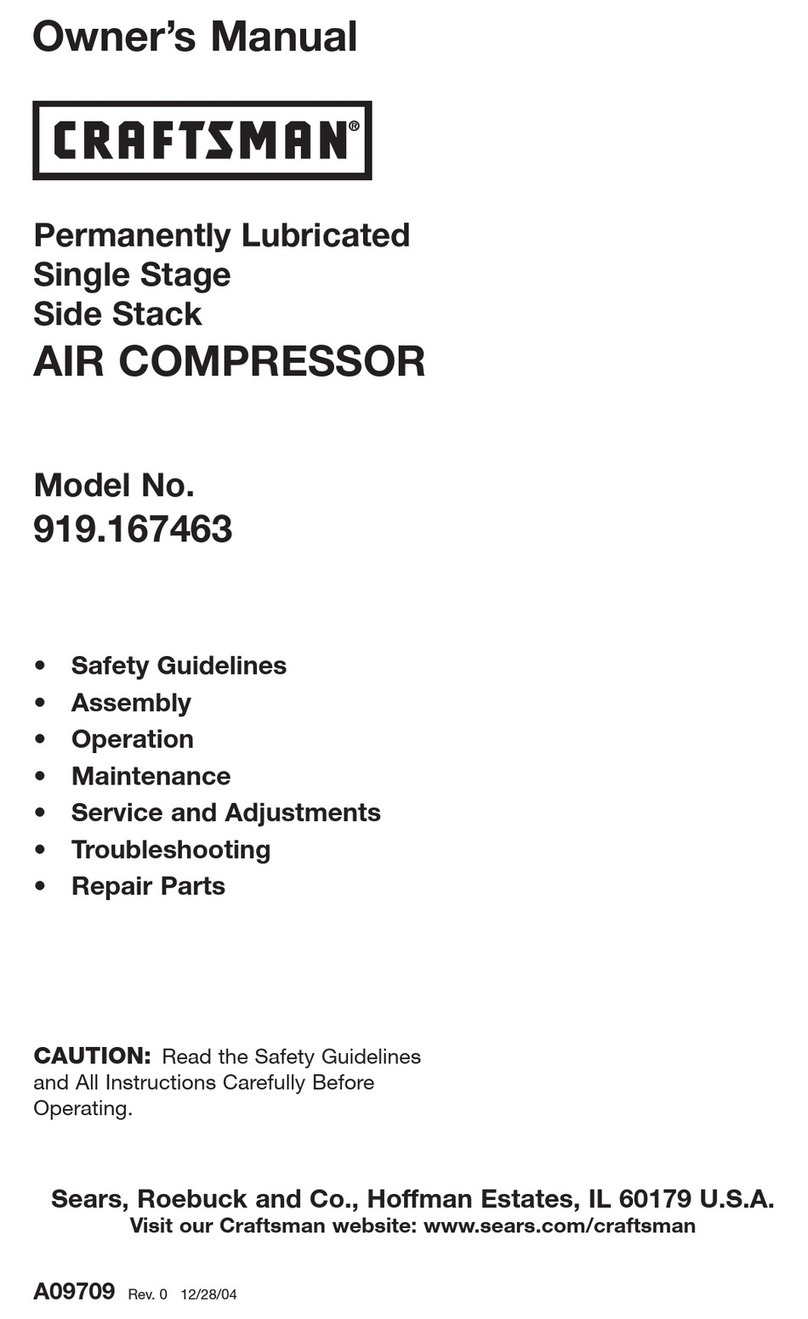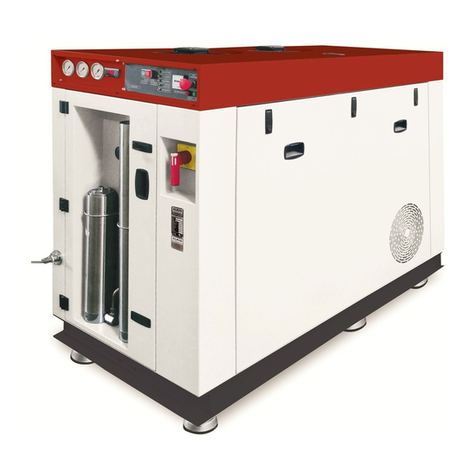
9999 Ensure the air supply valve is turned off before disconnecting the air supply hose.
9999 To move the compressor use the handle only. Maintain unit’s centre of gravity when lifting.
8DO NOT attempt to lift or move the compressor by any other means.
9999 Use the compressor in a well ventilated area and ensure it is placed on a firm surface.
9999 Keep tools and other items away from the compressor when it is in use, and keep area clean and clear of unnecessary items.
9999 Ensure the air hose is not tangled, twisted or pinched.
9999 Keep children and unauthorised persons away from the working area.
9899 DO NOT disassemble compressor for any reason. The unit must be checked by qualified personnel only.
9899 DO NOT use the compressor outdoors, or in damp, or wet, locations.
8DO NOT operate within the vicinity of flammable liquids, gases or solids.
9899 DO NOT touch compressor cylinder, cylinder head or pipe from head to tank as these may be hot.
9899 DO NOT use this product to perform a task for which it has not been designed.
9899 DO NOT deface the certification plate attached to the compressor tank.
9899 DO NOT cover the compressor or restrict air flow around the unit whilst operating.
9▲99 DANGER! DO NOT direct the output jet of air towards people or animals.
8DO NOT operate the compressor without an air filter.
8DO NOT allow anyone to operate the compressor unless they have received full instructions.
999 WARNING! The air tank is a pressure vessel and the following safety measures apply:
8DO NOT tamper with the safety valve, DO NOT modify or alter the tank in any way and DO NOT strap anything to the tank.
8DO NOT subject the tank to impact, vibration or to heat and
8DO NOT allow contact with abrasives or corrosives.
9Drain condensation from tank daily and inspect inside walls for corrosion every three months and have a detailed tank inspection
carried out annually. The tank shell must not fall below the certified thickness at any point.
999 WARNING! If an electrical fuse blows, ensure it is replaced with an identical fuse type and rating.
999When not in use, store the compressor carefully in a safe, dry, childproof location.
2. INTRODUCTION
All models feature aluminium cylinder heads with cast iron cylinders giving added resistance to wear over time. Suitable for general purpose
and workshop applications. All feature a single cylinder pump, except for Model No’s. SAC5030VE and SAC10030VE which are tted with a
V-Twin pump for added performance. Pump heads are directly coupled to a heavy-duty induction motor with copper windings for improved
operation and longer working life. Welded tank complies with latest European standards. Fitted with fully automatic pressure cut-out switch
with twin gauges displaying tank and working pressures. All 230v models are tted with an ASTA/BS approved non-rewirable plug with the
110v models being tted with a BS EN 60309 approved 16Amp plug.
3. SPECIFICATION
Model No:........................................................ SAC0610E.V3
Air Displacement cfm(ltr/min): ......................................4(113)
Maximum Free Air Delivery cfm(ltr/min): .....................2.7(76)
Maximum Pressure: ........................................... 116psi(8bar)
Minimum Rated Supply: ...................................................13A
Motor Output: ................................................................... 1hp
Nett Weight: ................................................................ 14.5kg
Outlet: ..............................................Quick Release Coupling
Phase:.............................................................................. 1ph
Plug Type: ................................................................3-Pin BS
Receiver Capacity:............................................................6ltr
Size (W x D x H):.....................................400 x 175 x 430mm
Supply:...........................................................................230V
Noise level: ...............................................................96dB(A)
4. PREPARATION AND ASSEMBLY
WARNING! The compressor is supplied with lubricating oil in the pump - see para. 4.4.
4.1. Remove compressor from packaging and inspect for any shortages or damage. If anything is found to
be missing or damaged contact your supplier.
4.2. Confirm that the mains voltage corresponds with the voltage shown on the compressor data plate.
4.3. The compressor should be installed on a flat surface, or one that does not exceed 10° either
transversely or longitudinally, and should be in a position that allows good air circulation around the unit.
4.4. The compressor is supplied without oil in it. The oil is in a separate container. Remove the transit plug
from the oil filler aperture, pour oil into the aperture until it has reached the correct level on the sight
glass (fig.2B). Fit the oil filler/breather (fig.2A) supplied into the aperture.
DO NOT ATTEMPT TO RUN THE COMPRESSOR UNTIL THIS HAS BEEN DONE.
4.5. Ensure that the air vent in the oil filler/breather is free from debris. If the air vent is blocked,
pressure can build up in the crankcase causing damage to the compressor and possible
personal injury.
4.6. Screw air filter (fig.3C) into inlet port.
4.7. Regulator assembly. See fig.4. Remove any packing material from the connector attached to the
pressure switch. Check that the connector thread has a factory applied sealant to prevent leaks.
Thread the regulator assembly onto the connector making sure that it is properly aligned to avoid
cross threading. The assembly should rotate approximately 6 to 7 revolutions. The two gauges
should be facing in the same direction. DO NOT overtighten.
g.1
B
g.2
A
C
g.3
SAC0610E.V3 Issue 1 23/01/19
Original Language Version
© Jack Sealey Limited

